Unlocking Singapore General Hospital’s Private Colonoscopy: The Unexpected Insights That Could Change Your Health Game Forever
So, two years ago, at the ripe young age of 43 — not exactly spring chicken, but also not ready for the rocking chair — I decided it was high time to get my insides checked out. Why? Well, I’ve battled constipation for as long as I can remember, always half-convinced that my gut was a ticking time bomb. Add to that a family legacy that’s as grim as it gets: my dad passed away from stage-4 colorectal cancer. Enough motivation, right? Fast forward to about a month ago, and I finally went through the colonoscopy experience firsthand. What’s it really like? Is it painful? How much does it cost? Does insurance cover it? And is it worth the hassle and the gut-wrenching prep? If you’ve ever toyed with the idea—perhaps nervously—or if you’re stuck wondering whether to pull the trigger on this dreaded procedure, my deep dive into the process might just clear the fog. Let me walk you through the gritty details, the unexpected surprises, and the lessons learned — all so you can face your own journey with a bit more clarity and less apprehension. Ready to find out what lies beneath? LEARN MORE
img#mv-trellis-img-1::before{padding-top:40.8203125%; }img#mv-trellis-img-1{display:block;}img#mv-trellis-img-2::before{padding-top:86.933614330875%; }img#mv-trellis-img-2{display:block;}img#mv-trellis-img-3::before{padding-top:120.0468933177%; }img#mv-trellis-img-3{display:block;}img#mv-trellis-img-4::before{padding-top:133.33333333333%; }img#mv-trellis-img-4{display:block;}img#mv-trellis-img-5::before{padding-top:133.33333333333%; }img#mv-trellis-img-5{display:block;}img#mv-trellis-img-6::before{padding-top:133.33333333333%; }img#mv-trellis-img-6{display:block;}img#mv-trellis-img-7::before{padding-top:133.33333333333%; }img#mv-trellis-img-7{display:block;}img#mv-trellis-img-8::before{padding-top:133.33333333333%; }img#mv-trellis-img-8{display:block;}img#mv-trellis-img-9::before{padding-top:109.51871657754%; }img#mv-trellis-img-9{display:block;}img#mv-trellis-img-10::before{padding-top:91.9921875%; }img#mv-trellis-img-10{display:block;}img#mv-trellis-img-11::before{padding-top:69.53125%; }img#mv-trellis-img-11{display:block;}img#mv-trellis-img-12::before{padding-top:139.31972789116%; }img#mv-trellis-img-12{display:block;}img#mv-trellis-img-13::before{padding-top:69.3359375%; }img#mv-trellis-img-13{display:block;}img#mv-trellis-img-14::before{padding-top:116.09977324263%; }img#mv-trellis-img-14{display:block;}img#mv-trellis-img-15::before{padding-top:35.44921875%; }img#mv-trellis-img-15{display:block;}img#mv-trellis-img-16::before{padding-top:120.18779342723%; }img#mv-trellis-img-16{display:block;}img#mv-trellis-img-17::before{padding-top:34.66796875%; }img#mv-trellis-img-17{display:block;}img#mv-trellis-img-18::before{padding-top:143.61851332398%; }img#mv-trellis-img-18{display:block;}img#mv-trellis-img-19::before{padding-top:136.53333333333%; }img#mv-trellis-img-19{display:block;}img#mv-trellis-img-20::before{padding-top:135.80901856764%; }img#mv-trellis-img-20{display:block;}img#mv-trellis-img-21::before{padding-top:143.41736694678%; }img#mv-trellis-img-21{display:block;}img#mv-trellis-img-22::before{padding-top:154.68277945619%; }img#mv-trellis-img-22{display:block;}img#mv-trellis-img-23::before{padding-top:67.48046875%; }img#mv-trellis-img-23{display:block;}
I wanted to do a colonoscopy about two years ago.
There are a couple of reasons. I was 43-years-old back then. Not very young but also not very old and I thought it is high time to get the internals checked. I have always struggled with constipation all my life and always have this idea that compared to others, my internals should be in a more disastrous state. Secondly, my dad passed away from stage-4 colorectal cancer.
There are enough motivations to do it.
I went through with my colonoscopy almost a month ago and I want to use this post to share some of my experience. The thought process, considerations, experience, cost, insurance.
I suspect some of you might be considering or have considered this and might have similar reservations unless you are unfortunately forced to do. A diagnosis like colonoscopy might bring to you certain degree of clarity so that you can live a life with less wonder at the back of your mind. If my clarity can help you, then it might be worth it to burn a couple of nights writing this.
Why Should We Consider Doing a Colonoscopy?
They say the colonoscopy is the gold-standard diagnostic screening if we would like to detect colorectal cancer (CRC) and precancerous polyps early with a combination of good accuracy, and potential polyp removal in a single procedure.
A colonoscopy personally does two things for me:
- It is a superior test to know if I have some deep problems and potentially solved them early and at once (consider as a procedure with fewest false negatives).
- Allows me to have a peace of mind instead of worrying too much over the intermediate term (false positives).
A colonoscopy test has a 95% or more sensitivity if our bowel prep is good and can be rather specific to rule out cancer. This means false positives is rare.
If they find precancerous growths (polyps) during the procedure, they would attempt to remove it unless the polyps is rather large.
According to a 2019 New England Journal of Medicine study with over 88,000 patients, colonoscopy reduces CRC incidence by 76% and mortality by 53%.
During the procedure, a flexible tube with a camera is inserted through your rectum to examine your entire colon.
Update: My reader JDS provided this informative Health Hub article which helps you se the frequency that you can take reference from to do Colonoscopy.
Choosing to Do My Colonoscopy via the Private Route with Singapore General Hospital (SGH)
When I was considering doing colonoscopy, I did not really know much. Is it painful, how long do I have to prepare for it.
The biggest unknown was the cost.
Is it a $30 out-of-pocket cost or is it $1,000?
I tried talking to some people but ultimately no one was able to give me an actual figure.
One of the reason that during the era where private hospital & surgical (H&S) plans such as your private shield and rider covered your payment for everything.
So many paid zero dollar and when asked, they have no idea how much roughly it cost.
But nowadays, our H&S shield plans and riders are costlier in premiums and even at the lowest we have to pay 5% co-payment.
I eventually knew the cost would likely be like $5000-$7000 if I opt for private and lower if I opt for government hospital.
I wonder with all that I knew about shield and rider payouts how much it will come to. I have the highest tier of Singlife Myshield, which means I should be covered for non-emergency private treatment. I also have a rider that covers the 10% co-insurance but not the deductible. This means if I opt for private treatment, I would at least have to pay the deductible of $3,500.
If I opt for a diagnosis at a government hospital the cost would be lower, but I suspect the amount would be less than the deductible ($1.5k to $3.5k depending), and that this would be the amount that I have to pay.
The cost is not the only consideration.
I wonder if there will be limits or difference in quality of care between a diagnostic at government hospital or private hospital.
My colleague sold me the idea that there will be lobster soup after my treatment if I opt for private treatment but that is probably not what interest me. I will share more about this concern in the next section.
In the end, I opt for the private route to a government hospital.
A private route means that I don’t get a referral from a polyclinic for a diagnostic and to apply directly to a government hospital.
This means I go in as an unsubsidized patient and I can choose my own physician if I wish to.
This is definitely going to be a more costly route.
My main reason for doing this is to just experience if there are any difference versus the usual subsidized route. Is it faster, do I get better treatment?
This private route is less talked about and I think if it is within my financial capability, let me just detail it out so that you my readers can understand it with your own eyes (if I described it well.)
Should I Choose General Anesthesia or Sedation?
During the process, you will be probe and you might wonder how uncomfortable, or even painful will that be.
One of the selling point of going the private route, according to my colleague is that you will be administered with general anesthesia which will knock you out.
When you wake up the procedure would be done.
In contrast, you will still be awake but groggy under sedation. Sedation will reduce your pain and make you more relaxed. You can still respond if spoken to.
You will remember little or nothing afterward.
My colleague told me of people’s experience going to government hospital and having deep discomfort during the process. This was colored by my late dad’s colonoscopy at SGH (which is the same hospital!).
During a point of his cancer diagnosis, they had to perform colonoscopy on him. My dad told me afterwards he was awake and the process was deeply uncomfortable.
My dad is a hard man, having being a contractor for most of his life and so he can take hardship. It really shook me when he said it was that discomforting.
Then again, I wonder if it is really THAT bad and if so, why would the hospital put people through this?
Would we have a choice at the government hospital of general anesthesia instead?
I made up my mind that I would request the doctor to do general anesthesia.
Spoiler alert: When I was in consultation, I mistaken the idea of sedation as meaning general anesthesia, so I didn’t actually made the request.
An error on my part and so I went through the day surgery under sedation.
What I understand from a fellow Telegram group member is that if you insist, the doctor can administer general anesthesia.
Making My Colonoscopy Appointment
Prior to this, it is good practice to check if the physician that you would choose is under the panel doctor list for your Shield plan insurer.
This is called pre-authorization. (You can read more about why the need for pre-authorization and letter-of-guarantee in this recent article)
Since I am going to a restructured government hospital, all doctors at government hospital are considered on panel which means I do not need to seek pre-authorization with Singlife.
I decide to go to my Health Hub to make an appointment with SGH.
A couple of days later I received this email:


Crap need a referral.
So I made a request to Dr Tang, our Providend resident concierge doctor who knew before this about my colonoscopy intention. He email me a referral within the next 10 minutes and I replied to this email.
On the 8th of August, I received this email:


The appointment was the next business day, which is Monday at 9:20 AM.
That was fast. Exactly as I hope because it will be weird if I go the private route and I have to wait for months for the appointment.
My Consultation with the Specialist.
I arrived for my appointment with the specialist doctor at 9:20 AM.
Even though it is so early, I had to wait until 9:50 before I am able to see the specialist doctor. We discussed my intention to do a proactive colonoscopy. The specialist explain that in the past few years, the profession have seen greater incidence of younger and younger people diagnose with colon cancer.
Thus, he would strongly recommend people as young as 45-years old to do a colonoscopy. We then discussed about any related discomfort we have in the past.
The specialist say that his normal schedule to perform day surgery is on Tuesday, Wednesday and Thursday and would be able to do it this two weeks. I check my schedule and thought I am able to do on any of those days. So he fixed an appoint on the Thursday which is three days later.
I was shocked how fast we can do this diagnosis. He said it is a good idea to get it over and done with, which is similar to my thought.
As mentioned, totally forgot about the general anesthesia part.
Nevertheless, I don’t think I am the sort that cannot endure discomfort. It would just be how bad the discomfort gets. In any case, if the experience is so bad, you guys would know about it and my experience would make your decision next time easier.
I had to wait for the instructions for my upcoming colonoscopy. This wait was damn long if you account for the kind of consultation fee that I pay, relative to a subsidized patient. I basically did not see any premium in speed of service here. I waited probably an hour at least here.
I was told a few things:
- I have to go on a very specific diet for the rest of the Monday and the next two days. You can see the specific things suitable and not suitable to consume later.
- Someone had to accompany me. This is pretty big for a single person. If there is no one accompanying me, there would be NO sedation. I cannot drive after my colonoscopy as well. For those who are interested, do check if someone can accompany you.
- I would need to take two big packets of laxatives that would clear the insides so that they can see clearly.
I was also advised regarding how much the day surgery cost will be:


Now you got to ask me what is the difference between SF70C, SF704C, SF705C. I have no idea.
But if you search up ChatGPT, they will give the following:
| Code | Description / What Happens During Procedure |
|---|---|
| SF702C | Colon, Colonoscopy, fibreoptic with/without biopsy. So diagnostic colonoscopy; may include taking biopsy but no polyp removal. (Ministry of Health) |
| SF704C | Colon, Colonoscopy, fibreoptic with removal of polyp (single or multiple less than 1 cm). So you do polypectomy, but the removed polyp(s) are smaller than 1 cm. (Ministry of Health) |
| SF705C | Colon, Colonoscopy, fibreoptic with removal of polyps (multiple more than 1cm). So here the polyps removed are larger / multiple significant polyps (over 1 cm) which tends to be more involved. (Ministry of Health) |
Key differences
- Whether or not polyp removal (“polypectomy”) is done. SF702C is diagnostic / biopsy only; SF704C & SF705C are therapeutic in that they remove polyps.
- Size / number of polyps removed:
- SF704C: single or multiple polyps but each less than 1 cm.
- SF705C: multiple polyps more than 1 cm (i.e. larger / more complex).
- Cost, complexity, risk: bigger / more polyps means more procedure time, possibly more instruments, and possibly more risk (bleeding, need for follow-up). So SF705C tends to be more involved than SF704C.
- Subsidies / claims: Because of the difference in complexity, the fees billed, MediSave / MediShield eligibility etc., will differ. The code determines what claims can be made, how much subsidy, etc.
So what they might be saying is that if the diagnosis is simple and there is no polyp removal, it will be the first rate, if not it will be more expensive. They should all be covered by Medisave if there are no removals.
This sounds reassuring that I may not have to come up with any out-of-pocket money and rely on my Medisave savings.
Spoiler: This isn’t the case and I will explain more later.
I will share more of the specifics at the end of this article.
What Did I Eat for the Next Two and a Half Days
Since I meal prep my daily food on that Monday, I can’t really follow the instructions that strictly. Thankfully I prepare chicken with oats. I can eat chicken, but oat is a disallowed food. I just eat the whole thing.
For Tuesday and Wednesday here are my meals:
- Tuesday afternoon: Pasta with salt and the Furikake left over from a client event weeks ago.
- Wednesday afternoon: Pasta with salt and the Furikake left over from a client event weeks ago.
That’s it.
Initially I had the intention to just fast for three days but I decided to eat something. Since I would often eat only a meal a day, this wasn’t that bad. I realize anything with Furikake will taste nice (or that I gotten used to food that others will find rather bland).
On the Actual Day of the Surgery Itself.
Then it was Thursday morning.
By right, I can have some light breakfast but since everything was suppose to come out, I wonder what is the fxxking point for me to eat two slices of white bread.
I just wait until 6:50 to have the first packet of this:


I bought two 1.5 litre of water and 1 bottle of Pocari Sweat. I would just dump one packet into each water bottle and drink them. The taste was bearable but I don’t think anyone of you would drink something that taste like that if you have the choice.
I had like 2 hours before I had to take the train to Singapore General Hospital.
Actually, nothing much came out except a lot of the water. I just go to the toilet more. It was not so bad for me really. It felt like just a tad worse than a normal diarrhoea. The one pasta a day helped I guess.
I managed to feel better (not too much feeling of needing to go to the toilet) by the time I had to leave home. I would meet my brother (who is accompanying me) at our MRT station.
I took a 30 mins train ride to Outram MRT from my place with my brother. We reached at about 11:30 AM. There is enough time for us to take the hospital bus, which will take us to Block 3 of SGH.
The hospital bus will bring you around SGH so that you don’t have to walk from the MRT station in but they have a fixed route, and Block 3 is at the last checkpoint of the route. The ride itself will take about 20-30 mins by itself and if we arrive too late, we might missed our appointment but since we arrive at 11:30, we should reach Block 3 on time and we successfully reached the block by 12:00 pm.
How the Actual Colonoscopy Go?
I checked in but have to wait at the registration counter for a long time. For some reason, you either wait at the registration or you wait at another point and this time I have to wait like 40-50 mins before i was processed. But then that end up closer to the official appointment time of 1pm in my SMS Message.
The lady at the registration immediately can see that I was covered under a Singlife Shield plan. She inform me that she will E-File this for me. I thought I had to do it myself but I misheard her and she will do that for me. So the deduction will be with my Singlife Shield and then Medishield.
If I have cover from my Company Insurance, I should inform my company insurance that I have a claim to make, but since I didn’t, I don’t have to do it later.
We will see how that Shield plan claim will turn out later.
I was then told to change my clothes into the gowns. I had to remove every shxt including underwear. They gave me a big drawstring plastic bag to put all my barang barang. I had to take this bag with me because eventually, I would need to change my clothes.
Then we wait.
10 minutes later (probably 13:10 because by now I don’t have my watch), I was called to do some pre-checkup.
The senior nurse asked me a set of questions which mostly is duplicated but I understand this is a precaution in case they got the data wrong.
Then she took my blood pressure. She asked if my blood pressure is normally this low (I think it was 97.) which I said not that I remember. She took again and it wasn’t any better but that didn’t affect the outcome.
She help me put a needle into my hand, which I presume is for the sedative later.


I seen my mom and dad have this for a few times and always wondered how painful it is. Sometimes they won’t tell you pain when they are feeling it. This is the first time it happen to me.
Turns out it’s ok. At most you get like a red ant bite here and there.
Now it is 13:30 and its back to waiting.
But 10 minutes later, my number was called and it is show time.
I walked into an operating room with about 6-7 people in there. I was told to lie down faced up. Then was told to turn to the left and shift to the right. Bring my legs to my abdomen (because it makes it easier for my ass to be penetrated?).
The doctor came and provide the sedation. Before long the probing began.
Can I feel anything? Sure.
But was it discomforting? I am not sure.
I described to my colleague Chin Yu later that we don’t forget extremely bad experiences and if it were so bad, I would have remembered it. Of course I felt the probe and it took place for a while. But it wasn’t as bad as some of the other experiences.
I guess I would consider mine to be okay. My COO Moon probably also went through the same experience as me and it seems fine with her as well. So that is two okay experience.
The next thing I remember was being very disturbed by machines beeping… follow by people talking.
This was the image that greeted me slowly after making sense of where the fxxk I am:


It took me a while to realize that this was another section of the hospital. I was knocked out! I was in the resting phase, where they would give us 1 hour to recover from the sedation.
No one disturbed me and in my blurry state (without my spectacles) I could see someone using their handphones. It took me a while to pry open the cable-tied back to get my phone and message my brother I was resting.
Not before long the staff brought me this snack.
We can often judge the grade of care by the food they give after we recovered. This is what I get:


You will probably get something better if you have stayed in a private hospital for such a check.
Not long after, a staff came and ask me to change back to my clothes. I thought I was suppose to go to a changing room but turns out I was able to change there.
I was to wait in the waiting area with my brother to wait for my report assessment.
Since I only ate a self cook pasta meal a day for two days, I thought I should reward myself with 1 x Fish and Chips and 1 x Chicken Chop for dinner that night:


The Fish and Chips cost me $7.90 and the Chicken Chop $7.50. You can see actually the portions are not a lot. Perhaps I should have stuck with my western food closer to my home but I think the French Fries are more flavorful.
I think it is not advisable to have such a large meal after colonoscopy but after 2 spaghetti in 2 days I thought what the heck.
How are My Results
I was briefed my results after resting and the drowsiness wore off.
A nurse presented the report and explain to me:






Except that there were not much explanation.
I was roughly told that I should be okay to discharged. I received a message that my next appointment would be 10 November.
How come 3 months later?
I infer that if the appointment is so far away my results should be okay.
This is where I felt that this is a big lacking. If I am attending this as a private route, it feels no different from my dad’s experience as a subsidized patient.
At the end of the day, did I feel assured that I am okay?
I had to infer indirectly what was told to me. I guess this is the part that I wish they could have done better. Imagine that I have to go Google each of the line items and interpretate myself if all of these things are okay.
I think you guys can read this as… there is no difference between the private and subsidized route.
How Much did I End Up Paying in Total
The cost breakdown:
- The Consultation: $177.12 using cash
- The Day Surgery: $1960
- Medisave: $1249
- Cash: $711
So that is about $888 in cash and $1249 in Medisave. $2,137 in full.
My Singlife shield and my rider Health Plus did nothing to alleviate the cost.
I received the following assessment a week later automatically:




In your hospitalization insurance, you have to pay part of the cost. There is a yearly deductible that you have to hit and you be assessed how much you can claim based on the grade of your shield plan after that.
If you hit the yearly deductible, you won’t pay another deductible if you visit again because the deductible is yearly.
If you have a rider that covers this deductible, then you may only need to copay 5%-10% of this and it will dramatically reduce your cost.
My rider with Singlife is unique in that it covers the 10% co-insurance, or the hefty part of the bill if the total cost comes up to $165,000 for a government hospital (which unfortunately a friend recently incur in his situation). I made this decision 20 years ago to prioritize covering for the significant healthcare costs and pay myself for the costs that I am able to pay by going with this private tier shield and co-insurance only rider option.
Which is what this ends up being.
Actually, I can submit all these consultation fees (the $177 one) as pre-hospitalization and post-hospitalization to claim but even if I submit them, they will still be lower than the deductible.
I guess you can choose to pay recurring premiums for a rider to offset this.
The premiums for a 45-year-old that could reduce this is currently $1,539 yearly with no-claims discount and $1.9k without (this is for Singlife Health Plus Prime for private, which is what my base shield plan is on. If this is on the Restructured Government A ward tier the Prime will be $419 with no-claims discount).
My colleague Jiamin, the lead for client servicing at Havend shared that if we are clearer about the quality of care that we need, I could have gone for a full rider that covers Restructured government A ward. The total premiums would be: $743 for a 45-year old [Singlife Plan 2: $324 + Prime for Plan 2: $419].
Had I gone with this option, the annual premiums are lower, and my out-of-pocket costs may be just $110.
There is value in knowing what you want, or the grade of care that you can accept.
What you might be struggling is to figure this part out.
Of course, I was fully expecting the costs not to be covered and prepared to pay for it.
Here are the bills in full:
I received my bill a week later.
I received an SMS informing me my SGH bill is now available and can be viewed on HealthBuddy.
So here is how the bill look like:








How Do I Feel About the Whole Experience?
It has been one month since.
I was extremely glad the results turned out to be okay (I think).
At the end of the day, I just want to have clarity if there are some deep seated problems and if there is how I can improve it.
And I think I got that somehow with a Colonoscopy instead of other diagnosis methods that might be less sensitive and accurate (which I did over the past five years).
At the very least, I can move on and live life for the next few years (it is advised to do a colonoscopy every 10 years).
If this is what I sought, then I kind of get it and I genuinely think paying hundreds or thousands for it, is worth it.
Was it worth it to pay $2,100 for it?
I think value is in the eye of the beholder. I would usually ask you to reflect the value something is to you, and try to pay low for it.
There is a way to go via the polyclinic and get subsidies for this. It will be cheaper but I cannot show you how much. For sure you don’t have to pay $177 in consultation fee, and the diagnosis will be subsidized.
If you happen to have a rider that covers much more, this would be cheaper for you.
Update: My Telegram group member Ikigai living did hers at age 45 through the subsidized way at NUH. The total amount before subsidy was $1,226 and after government subsidy was $669. The amount due to her was $557.26 which is fully covered by her company insurance.
If you ask me if next week we do another Colonoscopy will it freak me out, beyond the work schedule, the bigger issue might be not eating much for 3 days (personally what I chose) than whether its sedation, GA, or the probing.
The sedation would really make you not remember much about the whole process 1 month later haha. I can understand your fear of discomfort but 1 month in, I really honestly almost forgot how it felt like. (this is why I recorded some parts of this article down immediately after my western food meal because I think I might forget).
Going the private route with government does sped up the appointments, but to be honest I think if the doctor is available, you would have a diagnosis quickly just like mine. It may not be a privilege just because Kyith didn’t pay a subsidized rate.
My friend, from this post yesterday, shared with me that recently he had to do key-hole surgery to fix a long standing arm/shoulder issue. He went the polyclinic route and the doctor actually proposed a very fast surgery date.
I have a consultation schedule in November and if I know more, I would make update to this article.
As I have said, I hope my transparency will help set you mind if you have some reservations with some parts of doing colonoscopy. I think if you seek some peace of mind, this might help you plan it out.
Okay, the rest of the article is about some of the minor stuff.
If you want to trade these stocks I mentioned, you can open an account with Interactive Brokers. Interactive Brokers is the leading low-cost and efficient broker I use and trust to invest & trade my holdings in Singapore, the United States, London Stock Exchange and Hong Kong Stock Exchange. They allow you to trade stocks, ETFs, options, futures, forex, bonds and funds worldwide from a single integrated account.
You can read more about my thoughts about Interactive Brokers in this Interactive Brokers Deep Dive Series, starting with how to create & fund your Interactive Brokers account easily.
The Singlife Filing Process is A Bit Shit
We all can submit some of the pre and post-hospitalization claims to each of our insurer.
I decide to try my hand to see how easy is it to do it.
I could have asked my colleague Jiamin to do it for me at the cost of a few Shio Pans, but i want to give it a try.
There was a part of the system where I had to submit my document. So I name my document as usually with some date format like “2025.09.11”. Well some of these characters were not allowed. That is okay. Kyith totally understand this.
So I renamed the file and I tried to upload.
The system keeps telling me I can only upload one document. This is because for some fxxk reason they have kept the first document in storage somewhere.
This isn’t a browser caching thing. We tried it on my colleague’s computer and it is the same thing.
Long story short, I got my colleague Jiamin to submit.
Sometimes I also wonder I submit for fxxk since I know I will get zero dollar for it (it matters to reduce the deductible just in case touchwood I need to go the same route with another medical treatment in this year).
But Singlife ought to do better there.
Some Other Documents
This consent form contains information about colonoscopy:






This one explains sedation:






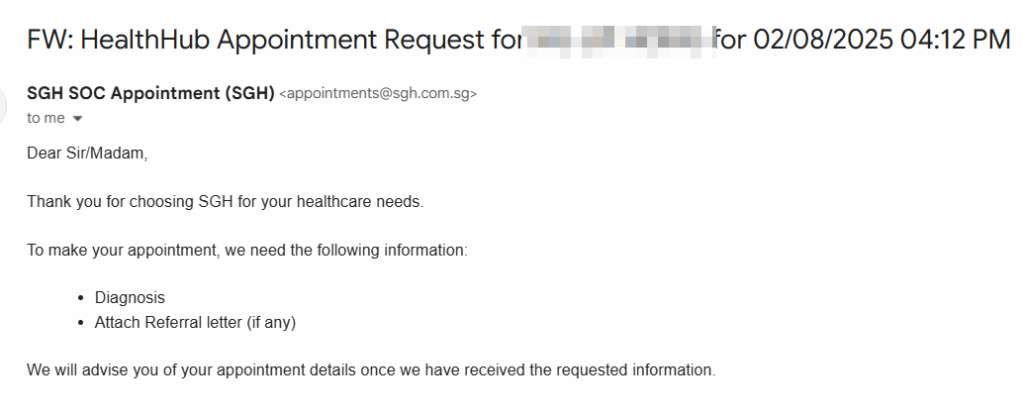


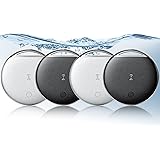
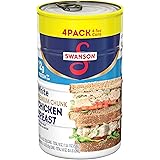

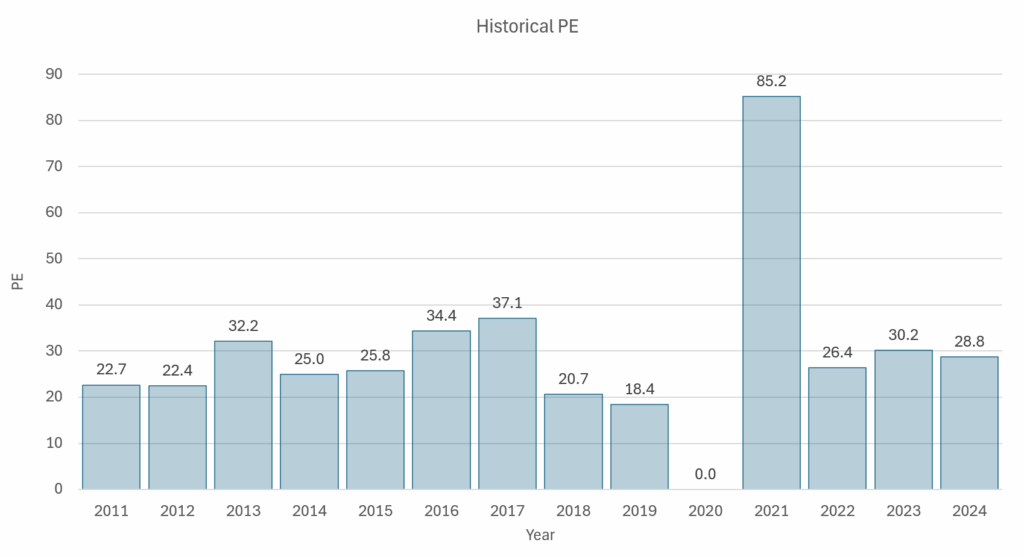
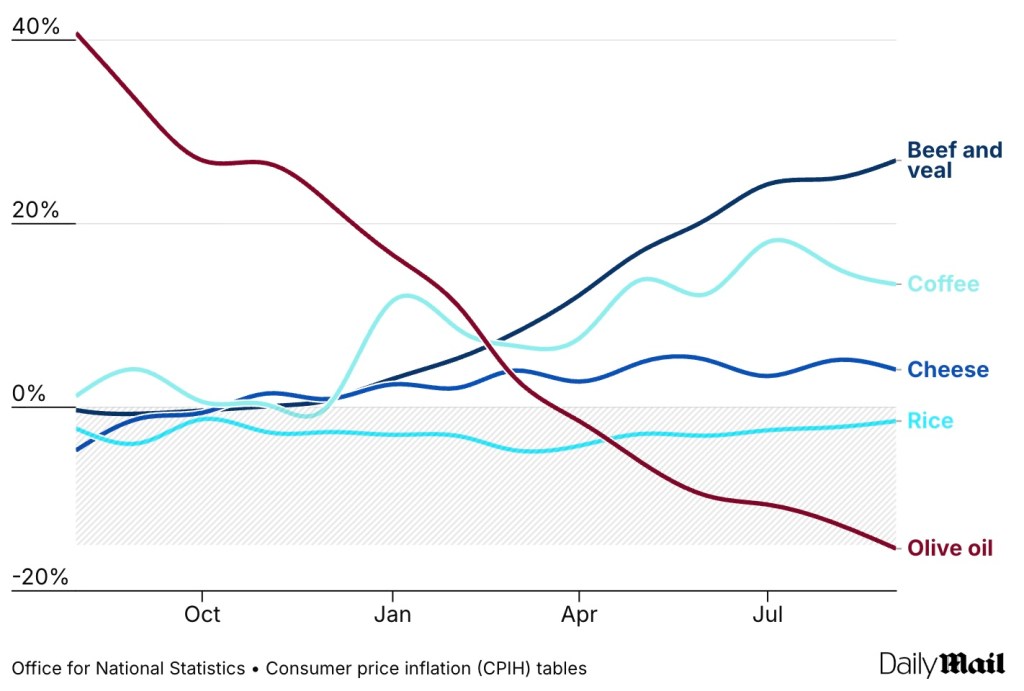
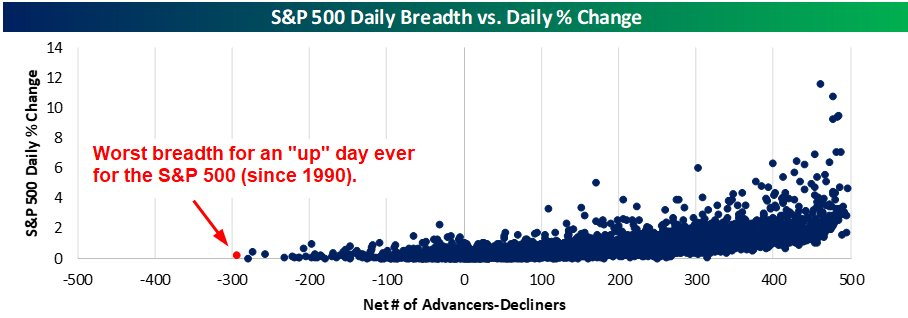











Post Comment